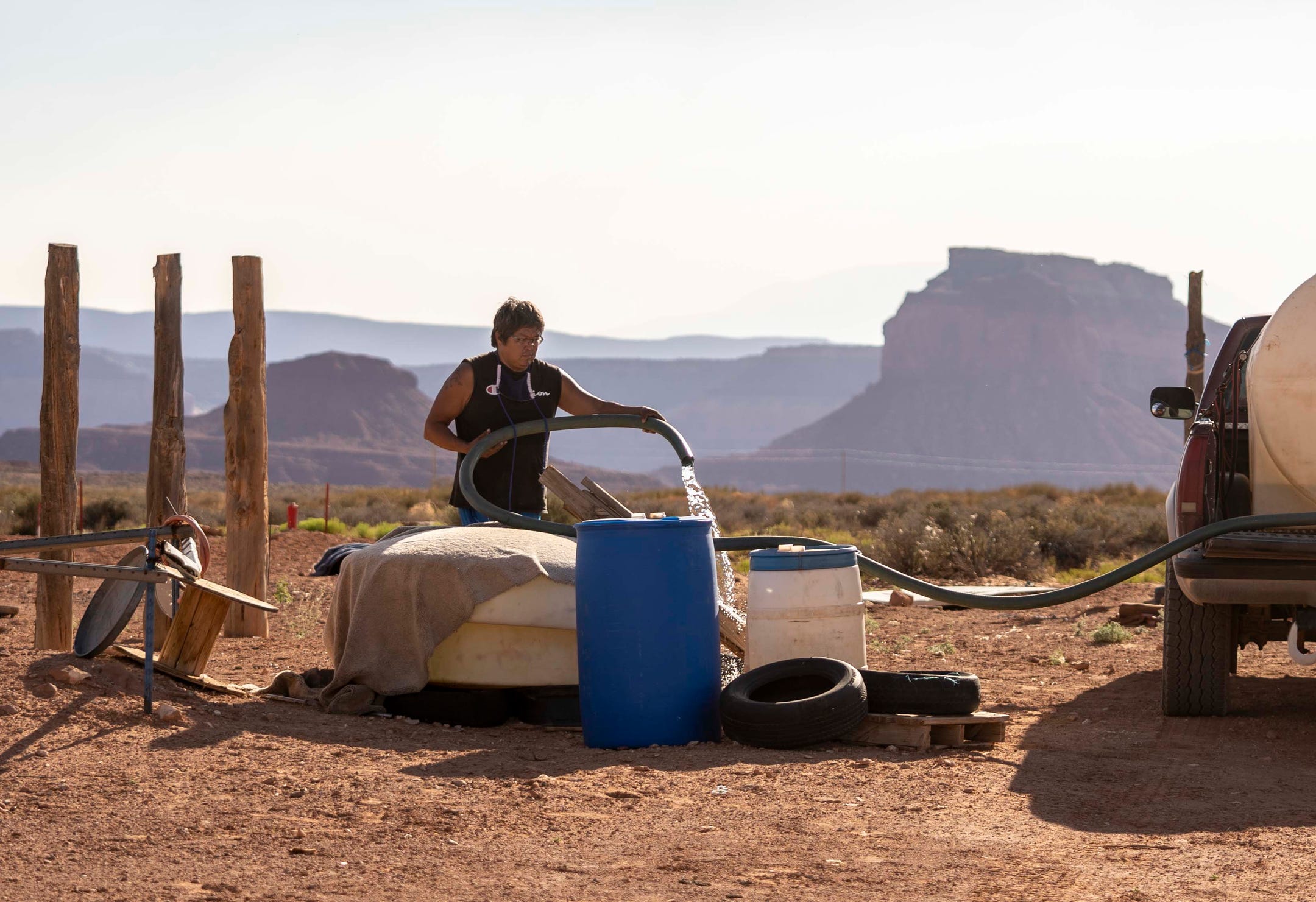
MONUMENT VALLEY, Utah — The line forms at the water spigot before dawn.
In Chevrolets, Fords and Toyotas, men and women of all ages pull up, the beds of their pickups holding plastic tanks and barrels.
Each day, all day long, people wait to take the white hose and let the water run into their tanks. It’s the only reliable source of clean drinking water they can count on in this part of the Navajo Nation, and they come from miles around to fill up.
Heidi Nelson wasbehind six other trucks at 7 a.m., her truck's engine idling. The wait would be nearly an hour, and the tankful of water would be enough to last her family two or three days.
“Some of it will be for washing our hands. Some of it will be for cooking,” Nelson said. “We just have to carefully watch over how we use our water.”
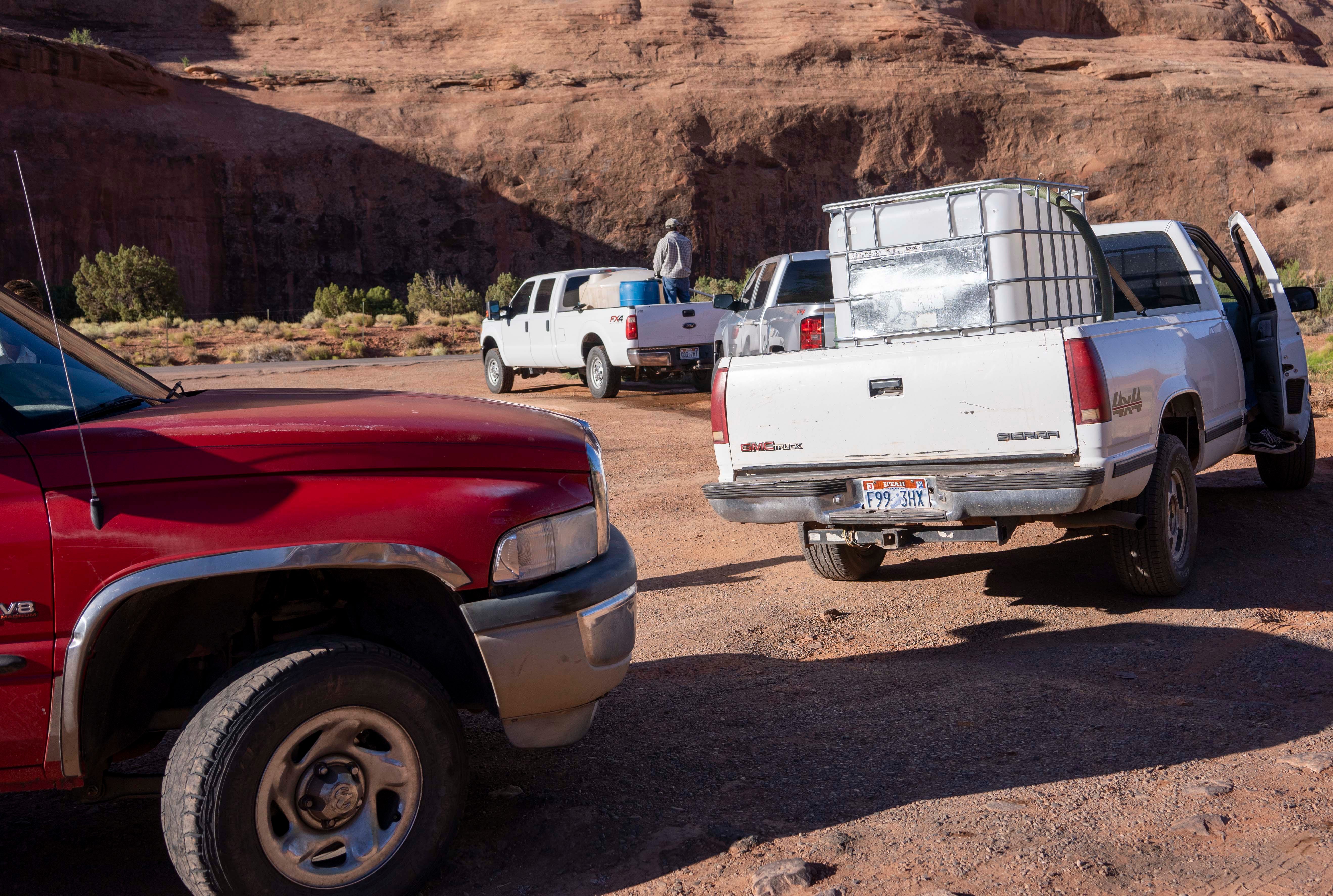
An estimated 30% or more of people across the Navajo Nation live in homes without running water.
For generations, the Navajo people have suffered with this lack of water infrastructure, a deficiency rooted in colonial history and systemic racism, compounded by decades of insufficient funding and complicated by a host of other obstacles, including long-delayed settlements of the tribe’s water rights claims.
In areas where there are few sources of safe drinking water, some people have resorted to collecting water from windmill-powered wells that were built for sheep and cattle. At times, they’ve unknowingly relied on sources tainted with hazardous contaminants, such as bacteria, naturally occurring arsenic and uranium from abandoned mines.
Efforts by the Navajo Nation and the federal government to address these deficiencies have long been hampered by small budgets and bureaucratic hurdles. And when planning infrastructure projects, officials from tribal and federal agencies have had to consider the high costs of extending water pipes to remote clusters of homes, often miles apart in the vast landscapes of desert, sagebrush and junipers.
In the past four months, the Navajo Nation has struggled to control some of the highest rates of COVID-19 cases in the country. The coronavirus has brought new attention to the dire need for water access on the reservation.

As the virus has spread and claimed lives, many Navajo citizens have found it difficult to take basic precautions like washing their hands because they can’t just turn on the tap. As older residents have tried to stay isolated at home, relatives and other community members have stepped in to haul water for them.
Leaders of the Navajo Nation say COVID-19 has brought urgency to their plans for water solutions. But the scale of needed infrastructure projects, with costs estimated in the billions, makes their task a monumental challenge. The tribe’s water officials say their plans involve drilling wells, diverting water from rivers and building pipelines and distribution networks to gradually reach more homes. They acknowledge these projects will take years to complete.
Along the Arizona-Utah border, many Navajos live in homes without running water or electricity. They use outhouses, keep rows of plastic barrels beside their homes and bathe using the water they can carry inside in buckets.
They haul water on dusty roads that wind through the towering mesas and buttes of Monument Valley.
In the reservation’s Oljato chapter in southern Utah, nearly half the households don’t have water.
Families must set aside time and gas money for their trips to the community of Goulding, where a red spigot stands in a lot beside the Monument Valley Post Office.
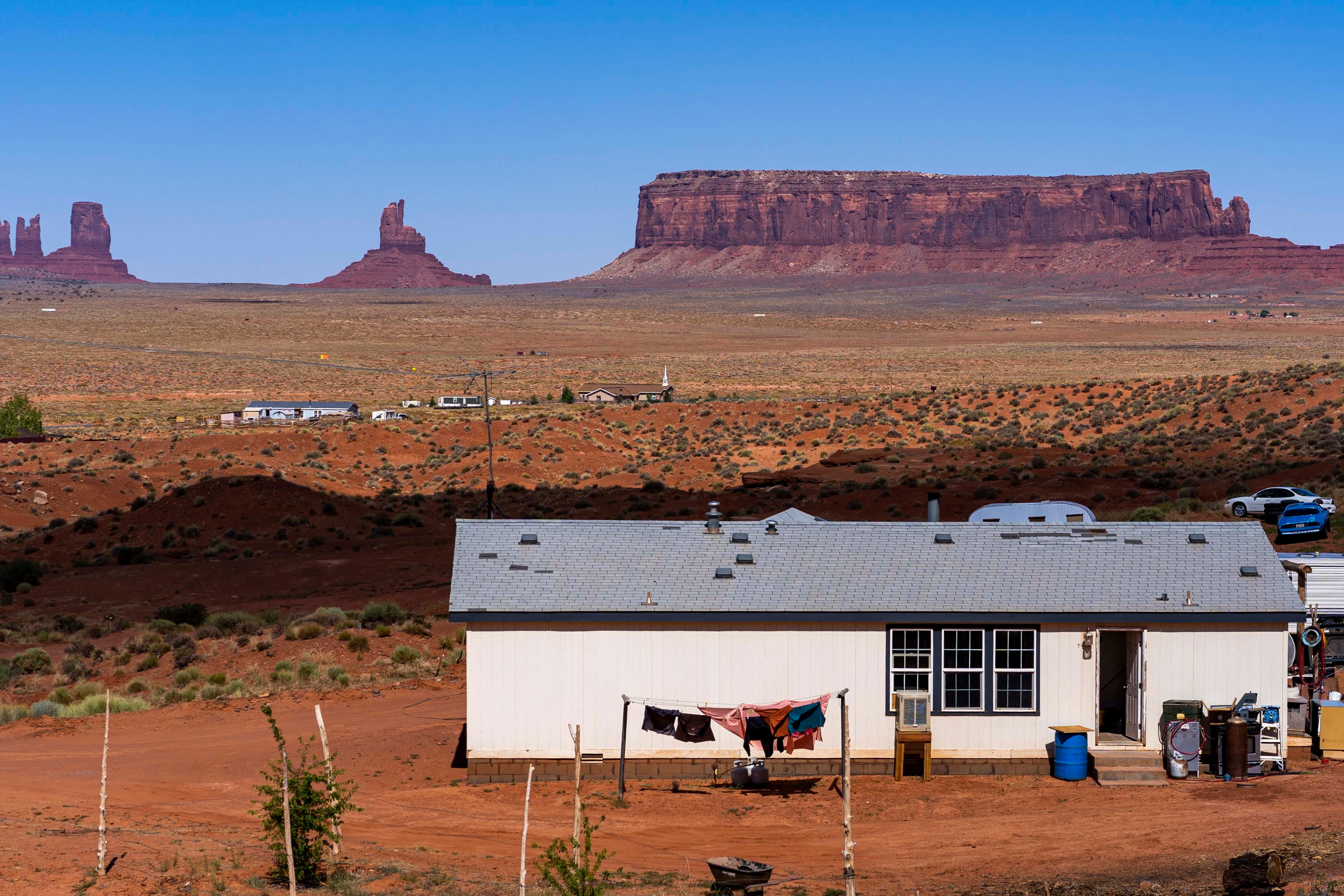
On one afternoon, some of those waiting in the queue of pickups said they would need to make a second trip to get enough for their sheep, horses or cows. In the summer heat, the animals need more water. Making two back-to-back trips can easily eat up half a day.
To pass the time in line, people chatted, checked phones or watched downloaded movies on iPads. Some wore masks as they stepped out of their trucks, grabbed the hose and sloshed water into a tank.
One of those waiting was Tommy Rock, a 44-year-old Navajo researcher who holds a Ph.D. from Northern Arizona University and who specializes in studying water contamination and environmental health.
Rock lives about 15 miles away with his mother and a brother. He hauls water in his truck to fill up their tank and water barrels and to give to their sheep. But they can’t shower at home, so they often drive to a campground, where they pay more than $6 per shower.
In May, Rock and his family came down with COVID-19. While they suffered through the illness, relatives helped bring them water.
Rock lost his sense of smell and taste, and the virus attacked his lungs. He coughed and struggled to breathe, a fever weighing him down.
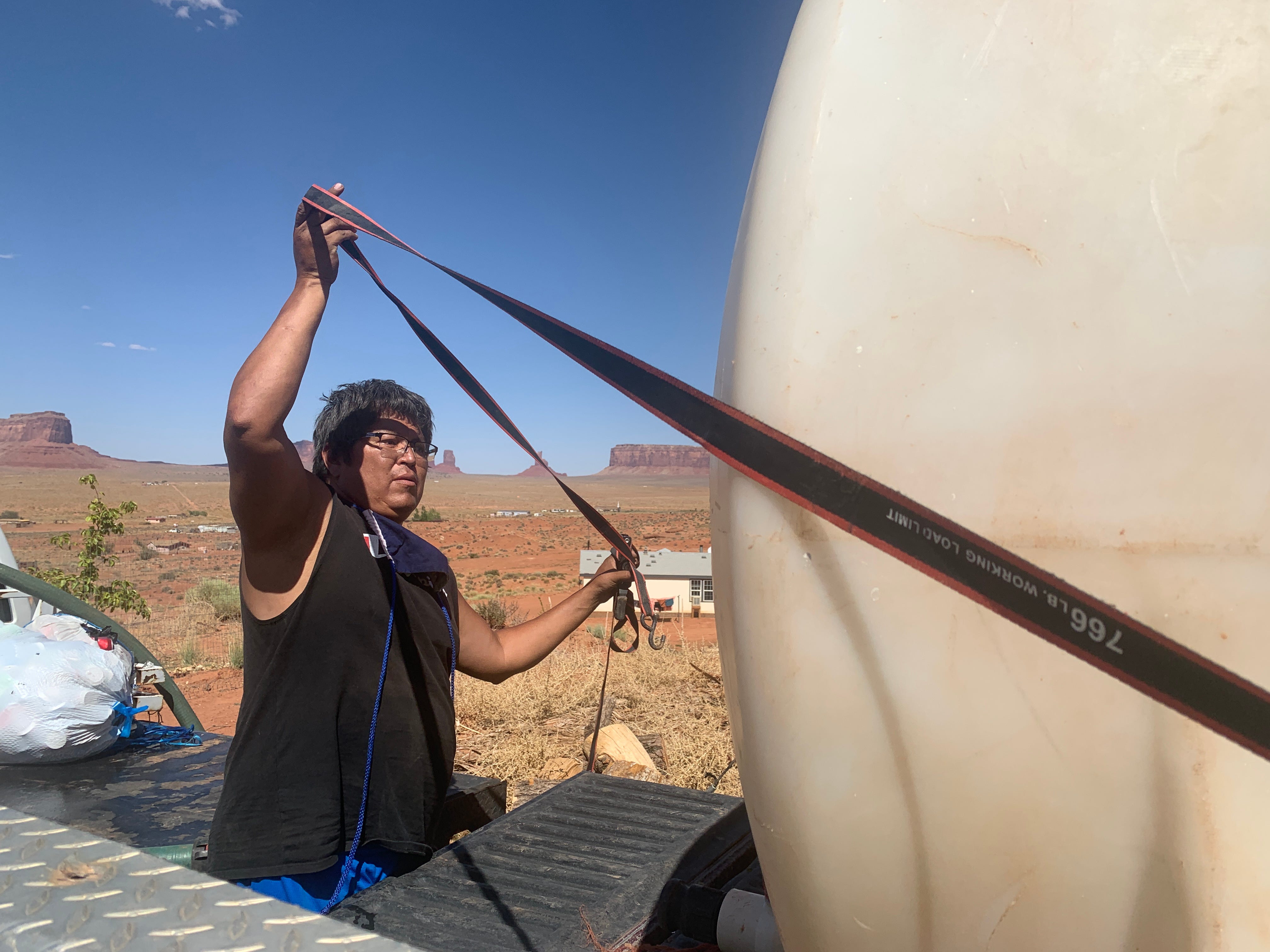
Living through the virus was “one of the worst feelings ever,” Rock said. To ease his cough, he boiled sage in a pot and breathed in the vapors. He and his family gradually recovered.
When Rock resumed driving to town for water, he put on a mask.
In the past few years, Rock and his mother have repeatedly heard talk about plans to lay water pipes in their area, where the horizon stretches to distant mesas. But these plans have been discussed for so long that Rock has grown skeptical about the prospects of construction getting underway.
“It gets really frustrating,” Rock said, standing by his truck while another man filled up.
“We just need more funding to extend a lot of these water lines,” Rock said. “When is that going to happen?”
The Navajo, who call themselves Diné, suffered abuses and hardships starting with their first encounters with white Americans.
In the 1860s, troops led by Col. Kit Carson waged a brutal campaign to beat the Navajo people into submission, burning villages and fields and slaughtering their livestock. Carson’s soldiers took thousands of Navajos prisoner and forced them to march as far as 450 miles to a desolate camp in eastern New Mexico in what became known as the Long Walk.
Many died on the journey. Others died during four years of imprisonment.
In 1868, the Navajo signed a treaty with the U.S. government that enabled them to return to their homelands. The treaty set aside the reservation, which later was expanded to more than 27,000 square miles of Arizona, Utah and New Mexico.
Forty years later, in 1908, the Supreme Court ruled in the case Winters v. United States that Indian tribes are entitled to sufficient water supplies for their reservations.
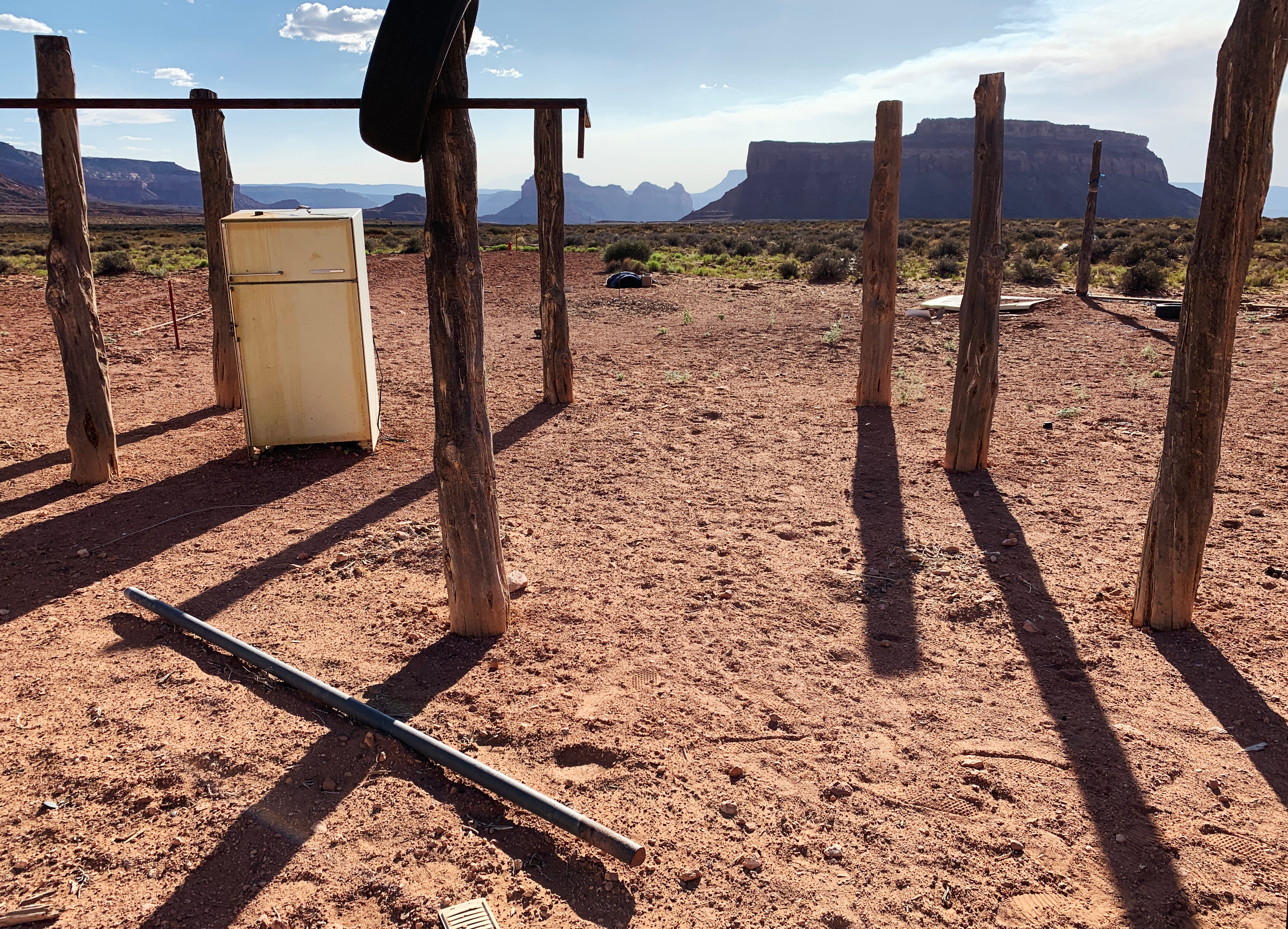
The Navajo Nation has rights to water from streams and rivers across the reservation, including the San Juan and Little Colorado rivers, as well as the mainstem Colorado River. But more than a century after the Supreme Court’s decision, much of those water rights remain unquantified. Talks on proposed water settlements, which would free up federal funding for infrastructure, have dragged on for years.
While communities have continued to rely on the wells they have, there hasn’t been nearly enough money available from the federal government or tribal agencies to make a dent in building a long list of proposed infrastructure projects.
A 2018 report, prepared jointly by the federal Bureau of Reclamation and the Ten Tribes Partnership, summed up the challenges, saying the Navajo Nation for many years has been “waging an uphill battle” to maintain and modernize its water infrastructure.
For people who live without running water, the lack of infrastructure poses health risks and economic challenges. Hauling water each week puts a financial burden on many families, requiring them to dedicate time and money to waiting in line and filling tanks, effectively paying dozens of times more for water than people in cities who pay a monthly water bill.
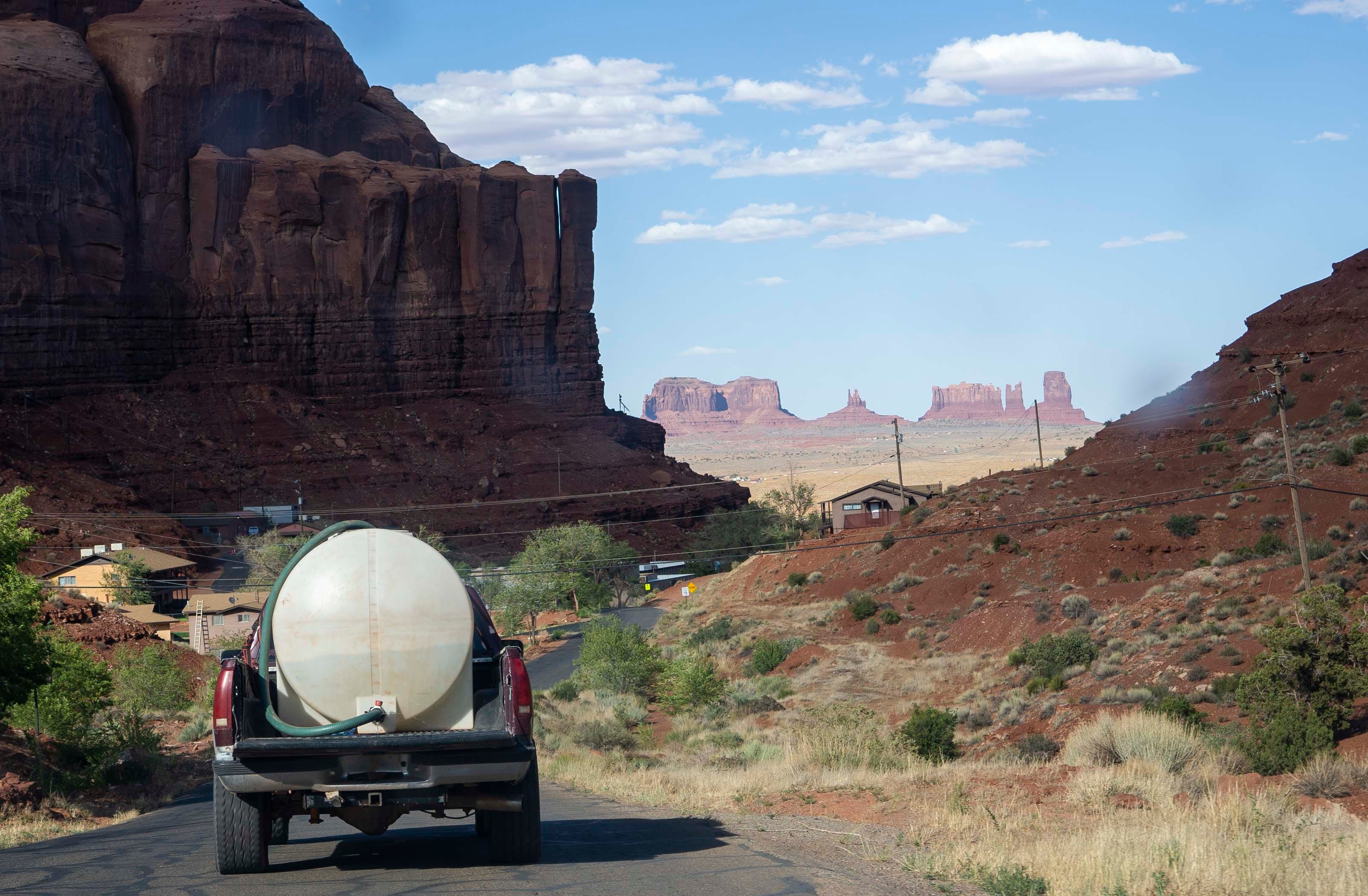
The tenuous infrastructure also leaves the Navajo vulnerable as the regiongrows hotter with climate change. Already, people in parts of the reservation say they’ve noticed some springs have been drying up in areas where they once led their sheep to drink.
A couple of years ago, when the ongoing drought was especially severe, the water-collection point in Goulding was turned off for a time and people had to go elsewhere to find water, Rock said.
The heavy reliance on this one fragile source raises a troubling question, he said. “If this water runs dry, where will people go?”
The answer, he said, is that residents would have to drive farther. More would end up going to unregulated wells that aren’t tested. And they would probably bring home water containing harmful contaminants, including uranium and arsenic.
Uranium mining on the Navajo Nation in the 1940s and 1950s littered the land with an estimated 1,200 mine sites, along with piles of hazardous waste.
Rock’s grandfather worked in the uranium mines. The workers, who weren’t warned of the dangers, regularly drank water from the mines. Rock’s grandfather died in 2006 of bone cancer.
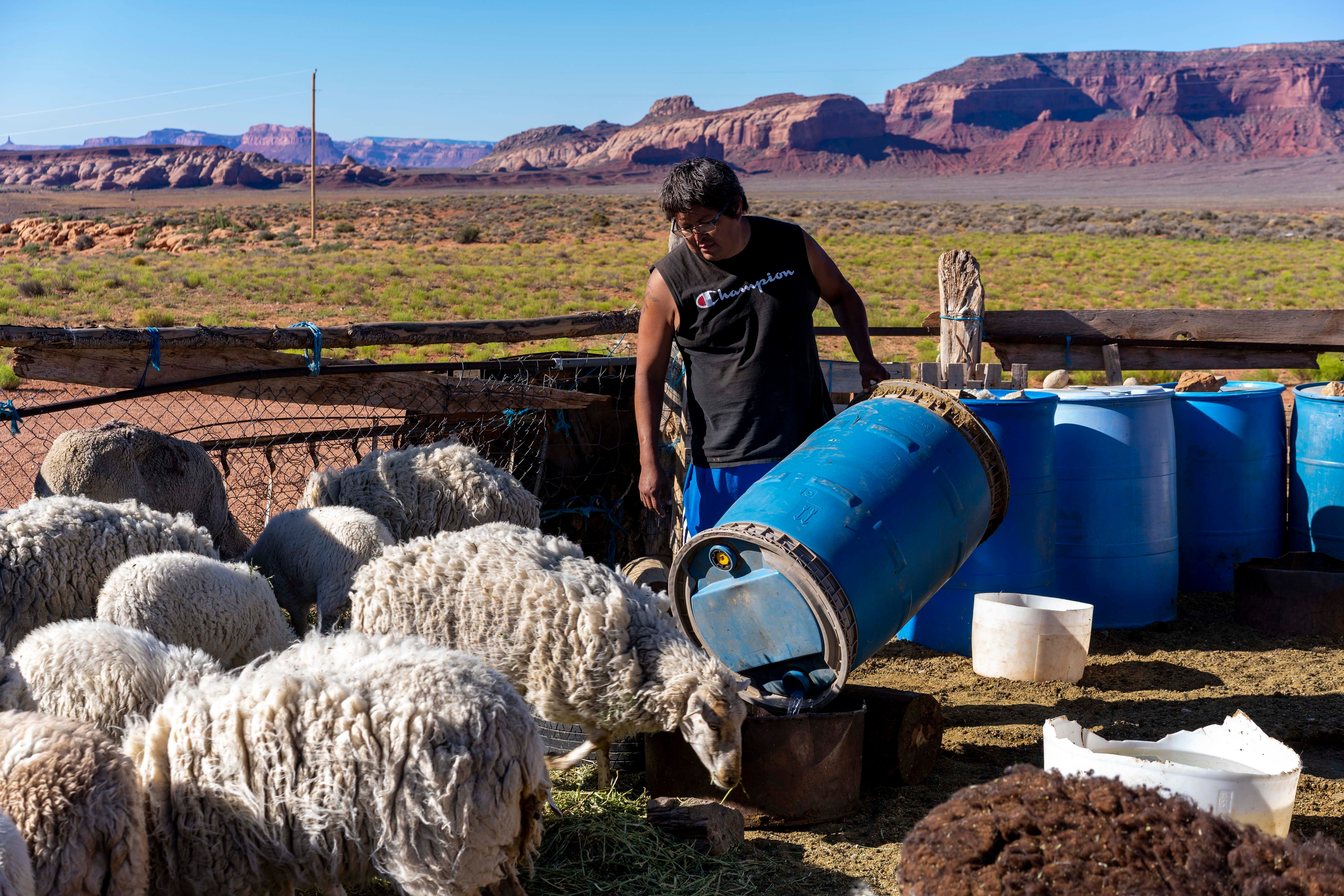
As a researcher, Rock has studied the links between diseases and uranium contamination left by mining. He co-authored a study examining uranium and arsenic levels in 82 unregulated wells and water sources on the Navajo Nation, and found that some had levels exceeding safe drinking water standards.
He and his colleagues also cited data and research showing that Native Americans in the Southwest have higher rates of kidney cancer than white people, and that Navajo people are more likely to die from cancers of the kidney, stomach and gallbladder than white people.
“This issue of lack of water, it always has been a public health issue,” Rock said. “We can’t keep living the way we are and just sidestepping or brushing it.”
This issue of lack of water, it always has been a public health issue. We can’t keep living the way we are and just sidestepping or brushing it.
Rock is planning additional research into the health effects of exposure to contaminants including arsenic and uranium, and he is raising funds to support his work. He also plans to help with grassroots efforts to develop water solutions.
He doesn’t think building clustered housing developments with water systems is the answer, because that would run counter to Navajos’ traditional ways of living spread out on the land.
“That's not going to preserve our culture. That's not who we are,” Rock said. “We need to have those difficult conversations and talk about our way of life and preserving that.”
One promising strategy, he said, would be to make some of the many unregulated wells usable again by installing filtration systems or other technologies to treat the water.
“I think we have a great opportunity to address it,” Rock said. “What we do now will help seven generations down, so they have water.”
A similar lack of infrastructure plagues the reservation’s Leupp chapter in Arizona, where many residents live in homes without water.
Angela Cody, the chapter’s vice president, speaks passionately about this longstanding injustice and about how she wants to see funding and action now. The Leupp chapter was the first to be designated by the Navajo Nation, in 1907.
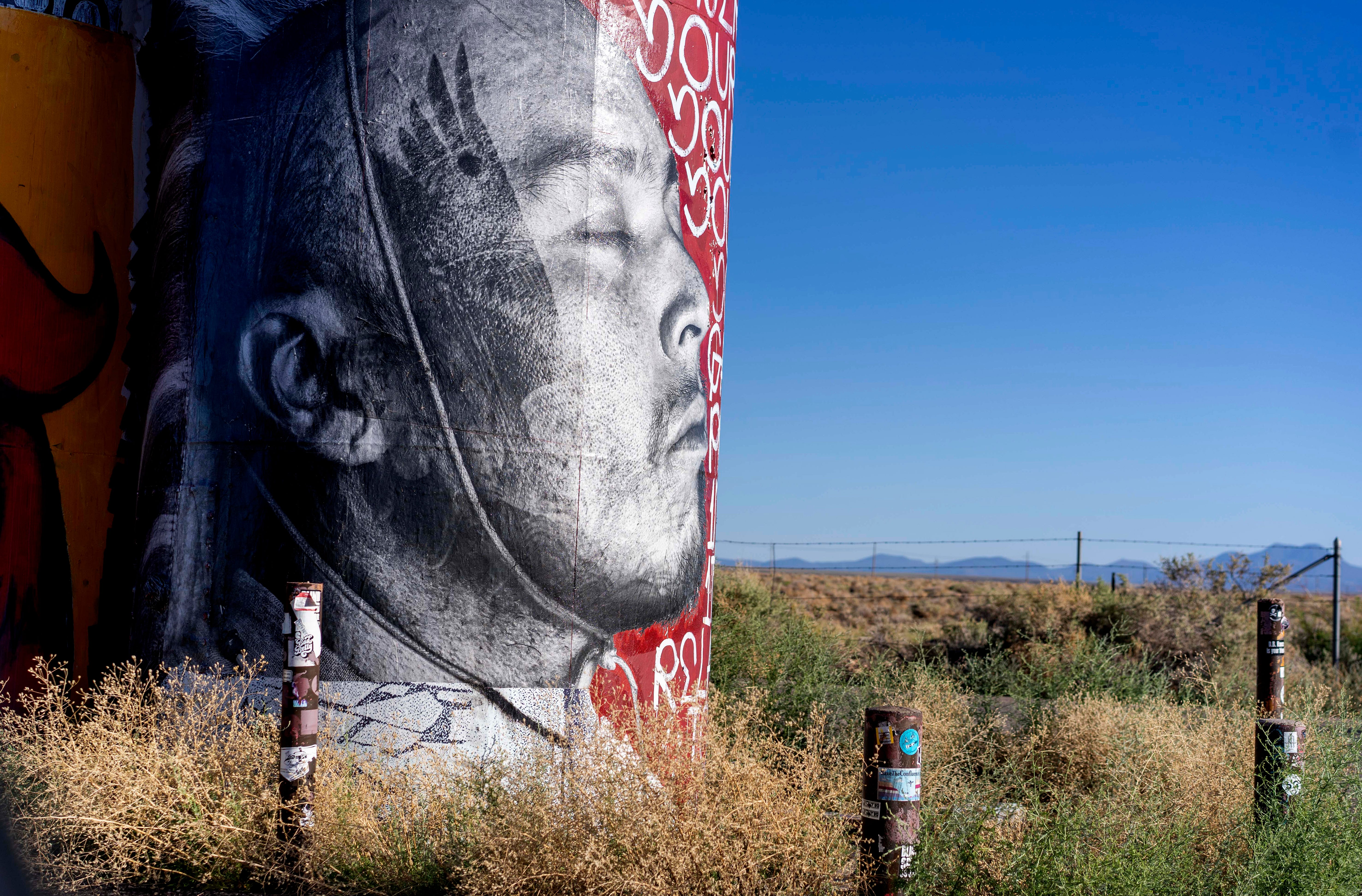
“To this day, still no water," Cody said. "Do your math. How many years is that? Nothing. We've done many, many proposals, pleas.”
She stood wearing a mask beside a water tank outside Leupp, where several people in trucks waited to fill up for their livestock. A large sign read, “THIS WELL IS NOT FOR DRINKING WATER.”
“We really need water,” Cody said. The water table is shallow in the area, and there is good drinking water, she said, but there hasn’t been funding to access the water. “We just need to develop it and run it to these homes.”
The community of Leupp has a water system but the many homes in the surrounding grasslands do not.

Cody said she wants to see members of Congress appropriate funding to finally push forward with infrastructure projects.
“I want them to walk in our shoes, feel our frustration. They need to not have water for a month,” Cody said.
Cody said she wonders if government officials in Washington, when they read about people on the Navajo Nation living without water, really understand what it’s like. She said she’d like to ask them: “Do you know that we are people? We are five fingers, just like you, like anybody else. Why is an appropriation not set aside for us in our name?”
“I just feel, all the time, we got left behind,” Cody said. “And that brings the question: Are we even human? What are we? Do we count?”
Fixing the situation will require a concerted effort and a funding commitment, Cody said. If the government were to appropriate $1 billion per year for five years, she said, “our problem would be solved.”
For now, response efforts focused on the coronavirus crisis could help pay for some water projects.
I just want water for my people. Every home. We don't give up. We just keep asking.
The Navajo Nation has received $600 million in federal funding under the Coronavirus Aid, Relief and Economic Security (CARES) Act.
Navajo Nation President Jonathan Nez and other tribal government leaders have pledged to use a large share of the funding for water infrastructure. But tribes have been given only until the end of this year to spend the funds. And because building water lines will take more time, Navajo leaders have been asking for the deadline to be extended.
In the meantime, representatives of the tribal government, federal and state agencies and other organizations have been talking on conference calls twice a week to coordinate immediate efforts to improve water access in response to the pandemic.
Employees of the Johns Hopkins Center for American Indian Health have built about 100 handwashing stations, which include water jugs mounted on wooden frames, and have been delivering them to homes that need them. About 200 more handwashing stations will be distributed soon.
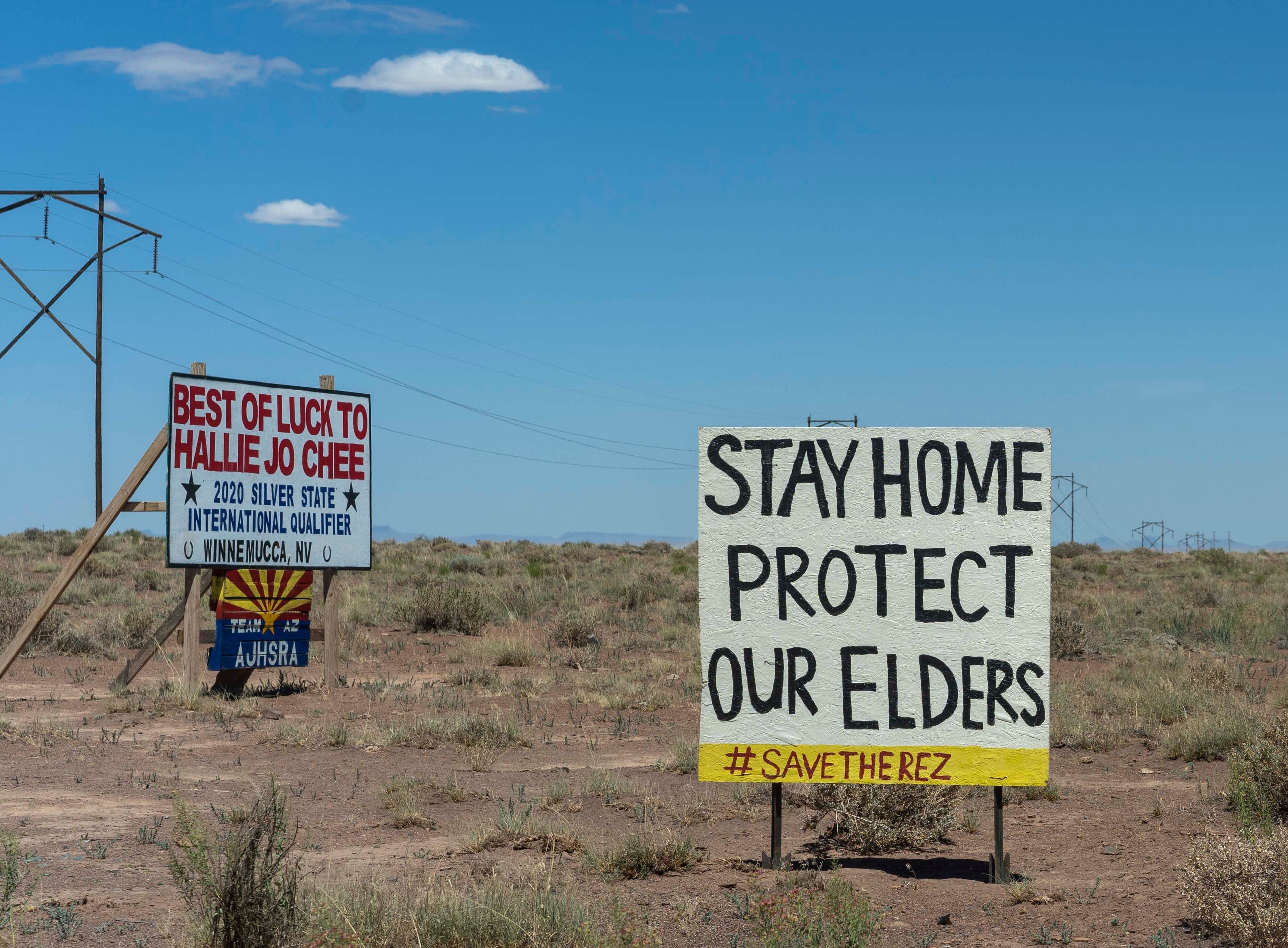
Officials with the federal Indian Health Service have used some of the agency’s coronavirus relief funds to repair water-collection points at the local government buildings of five Navajo chapters, and they plan to install new spigots where people can fill up in about 50 other chapters.
One spigot next to the Leupp chapter building was fixed about a month ago, Cody said, and people have been coming to fill their tanks.
Cody said she will keep pressing for projects that will bring water pipes to more homes.
“I just want water for my people. Every home,” Cody said. “We don't give up. We just keep asking.”
Dust billowed behind Larry Holiday’s truck as he rolled along a gravel road descending into Monument Valley Tribal Park. Off to the side, he pointed to the sandstone giants Mitten Buttes and Merrick Butte, which frame an iconic panorama made famous in Western films and commercials.
Holiday pointed out where John Wayne filmed the 1939 movie “Stagecoach,” where Clint Eastwood climbed a pinnacle called the Totem Pole for his 1975 film “The Eiger Sanction,” and where a silver DeLorean zoomed through the desert in “Back to the Future Part III.”
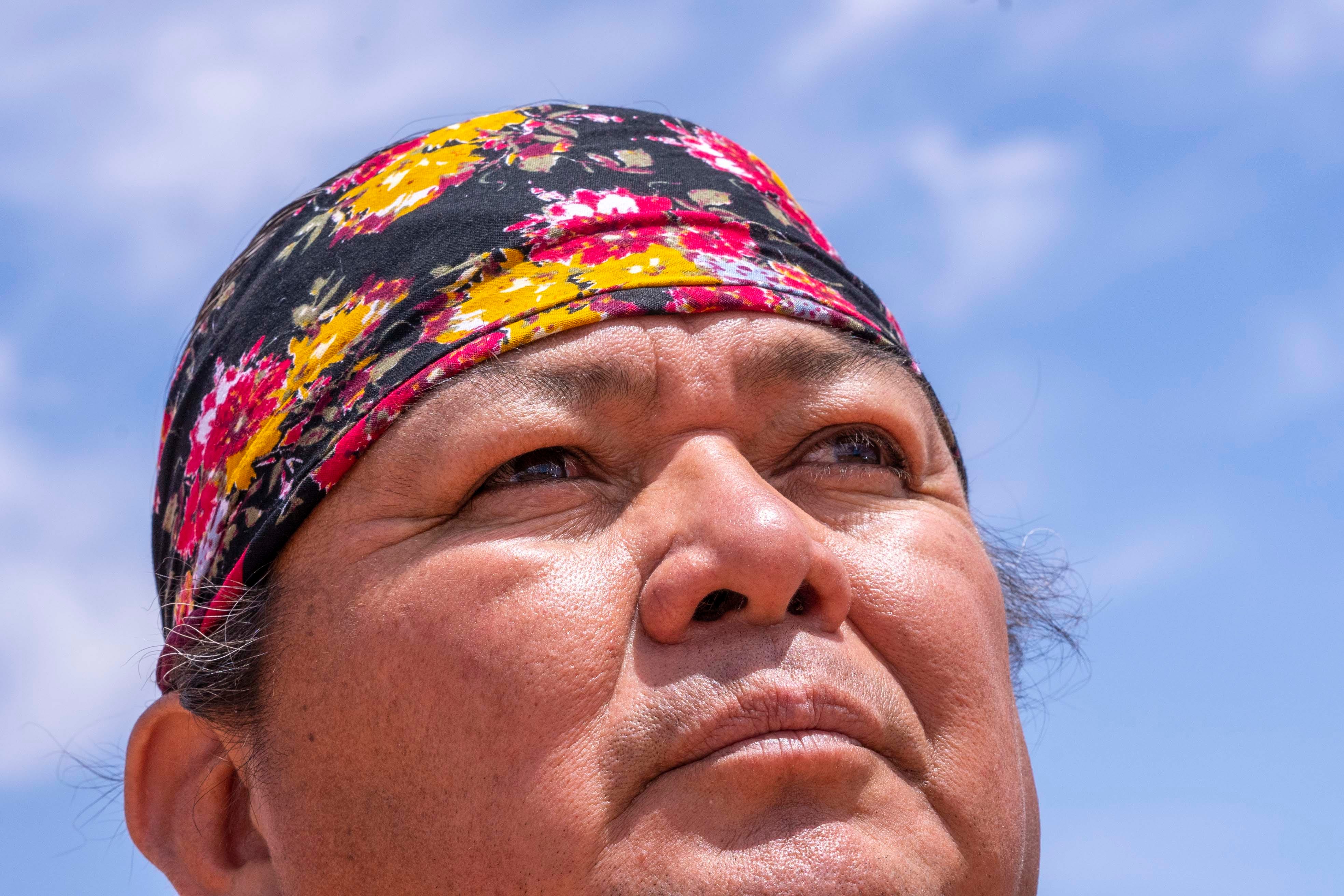
He rattled off the names of rock formations in the distance: Spearhead Mesa, Thunderbird Mesa, Three Sisters.
“This is what I love to do, driving around in my backyard,” Holiday said.
Holiday is 53 years old and has been exploring Monument Valley for much of his life. He started working as a tour guide in high school, leading groups on horseback.
For the past two decades, he has worked as school liaison at Monument Valley High School. Holiday has regularly delivered donated food from the local food bank to people in the community.
When the pandemic hit, Holiday began to hear from families who needed water. He decided to help. He has been filling a 300-gallon tank and delivering water to families, many of them older people who have been staying home to avoid being exposed to the virus.
Some of those he visits have been sick with COVID-19 and have recovered. Others have lost relatives to the virus.
As he approached a small wooden house, Holiday put his hand out of the truck’s open window and raised it high. He shouted, first in the Navajo language and then in English: “Do you need water?”
Standing in front of her home, Juanita Donald greeted him with a smile and said yes, she could use water. The 61-year-old said she hasn’t been going out since the coronavirus outbreak erupted. Her granddaughter has been making the 20-mile drive to town to bring water.
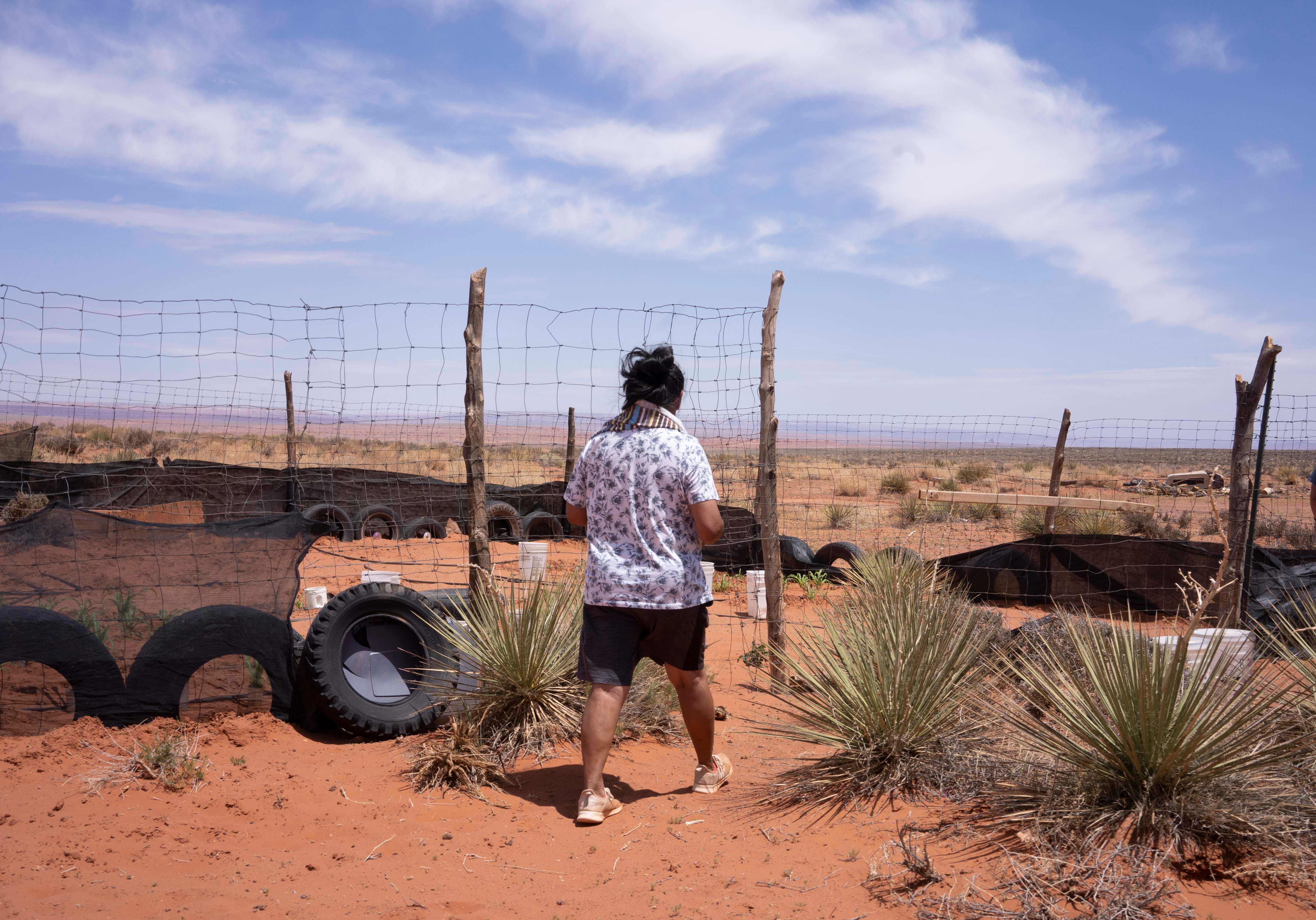
Holiday turned the valve on his tank and the water gushed into a barrel. He lifted a cardboard box from his truck and carried it to her. Inside was pasta, canned tuna and other donated food. Holiday told her he would soon be receiving some donated water tanks.
“Yeah, I want one,” Donald told him. She thanked him for visiting her.
“It’s very good people come and help," she said. "I really appreciate it.”
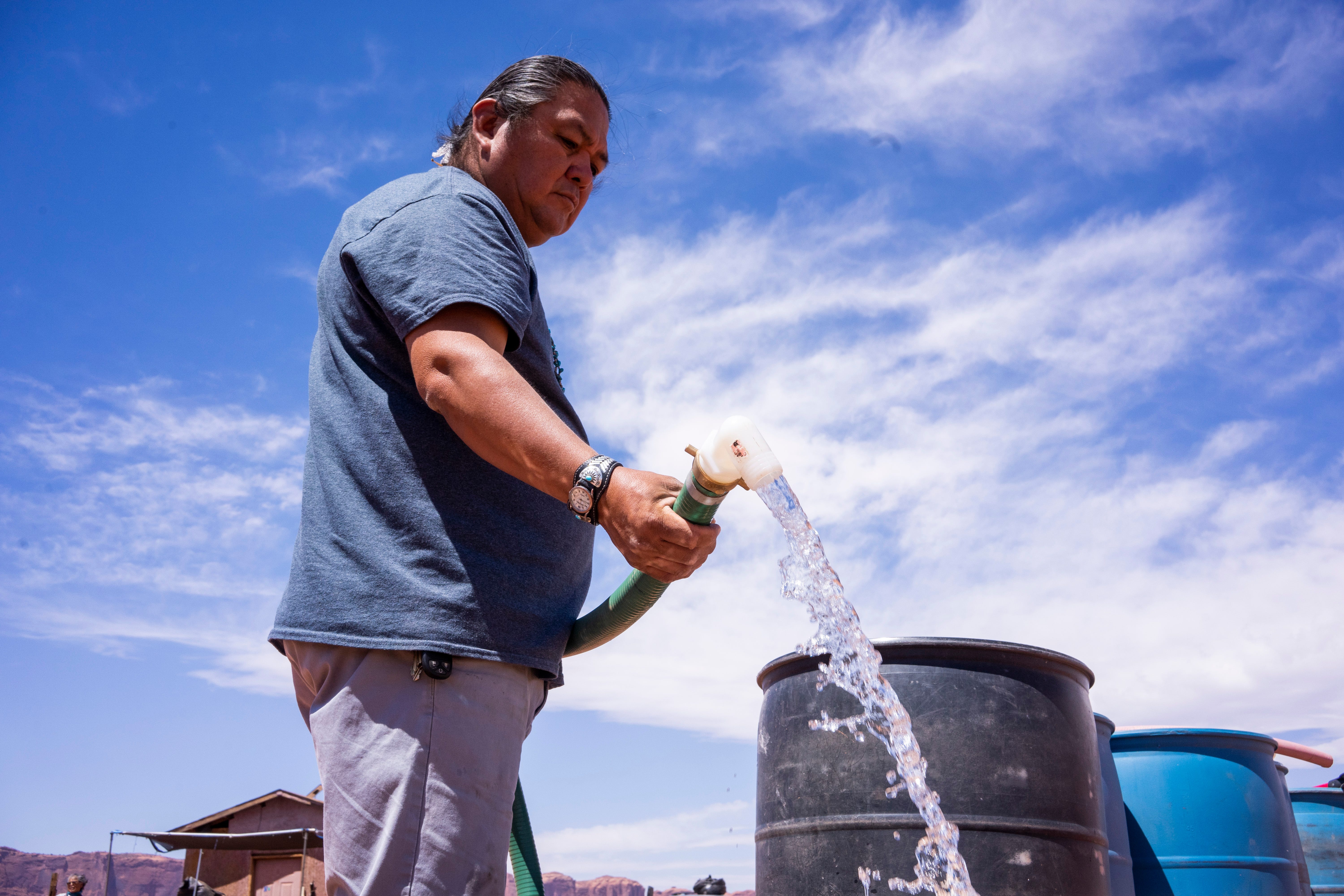
Holiday offered Donald a few hand-sewn masks and said goodbye.
As he drove through a stretch of the valley where horses roamed in the distance, Holiday said hauling water allows him to check on people and see how they’re doing.
“Just by stopping by and giving them a little something, they appreciate it. It makes them happy that somebody still remembers them. That’s what I like about it,” Holiday said. He described them as “my aunties, my grandmas, my uncles,” though only some of the families are his relatives.
Visiting a cousin’s family at the base of a mesa, Holiday unloaded water into a row of plastic barrels.
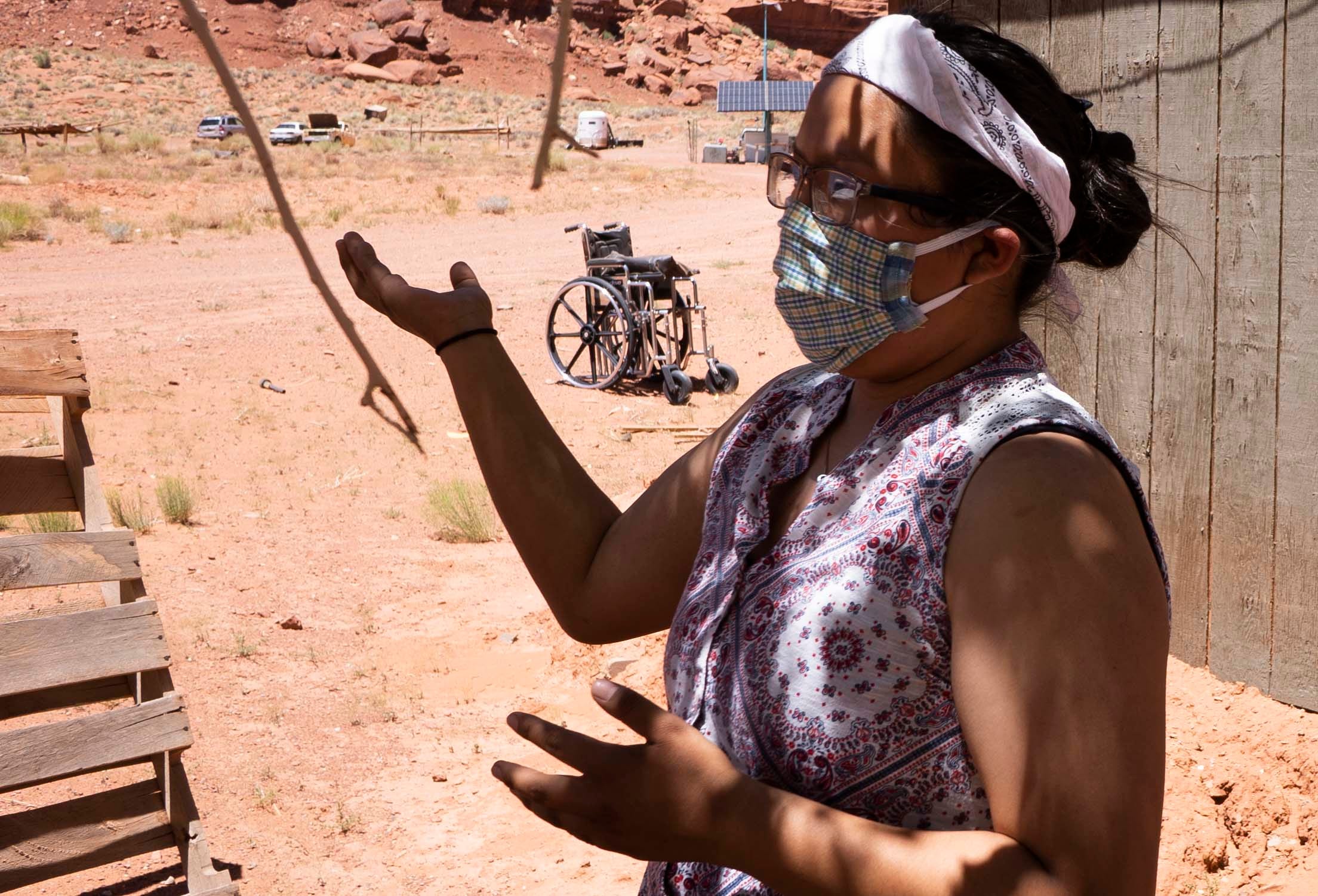
Felicia Holliday, a 17-year-old niece, said she would use one barrel for washing and cleaning. She lives in an eight-sided house built to resemble a traditional Navajo hogan, where she helps take care of her 80-year-old grandmother, who has diabetes and had both legs amputated.
“I carry her around,” Felicia said. “Since COVID came, she’s been cooped up in the house.”
Felicia bathes her grandmother with a bucket and a washcloth. Other relatives keep the water barrels filled, driving to the spigot early in the morning.
“It’s pretty much a long line for water,” Felicia said.
“Now that it’s really hot, the water runs out quick,” she said. “It’s a big problem. Every family that I know, they have a water problem.”
In the tribal park, dozens of people live on lands where their families have made their homes for generations.
Some residents work as tour guides, leading jeep tours or taking visitors on horseback excursions. But the tribal park closed due to COVID-19 and their businesses are at a standstill.
Lately, park employees have been making rounds with a tanker truck to supply water for residents’ sheep and horses.

Traditionally, sheep herders in the area have led their animals to springs where water gushes out of the rocks into the desert. Holiday stopped at one of these springs while driving through a wash. The spring flowed beside a sand dune and formed a shallow stream that collected in puddles.
Holiday squatted, put his hands in the water and wetted his hair.
“Water here is life,” Holiday said. But when it comes to getting water pipes built, he said, people have been talking for years about the need and there has been little progress.
“The process is very, very slow,” Holiday said. “We need to get together, our leaders need to come together, so we can all work together … to fix this problem.”

When Holiday visited Effie Yazzie to bring water, she said she wishes the park would set up a water source nearby so her family wouldn’t have to drive so far.
Yazzie, who is 65, said when she was a girl, she went with her grandfather in his wagon to a water hole, where she helped fill gas cans. She later took her animals to a pipe that emerged from rocks, where water poured into a concrete tank. But during floods decades ago, rocks came down and cracked the pipe, rendering the site unusable.
Yazzie said these sorts of water sources could be developed again and would lessen the crowds at the public faucet in Goulding.
“The older I’m getting, the more people are in line,” she said. “And I keep, kind of like, wishing that the Navajo tribe would do something to get water close by.”
Yazzie and her family lead horse tours. They have a house and also a traditional hogan.

Yazzie recently fell sick with COVID-19 but has since bounced back. She and her family have been doing their best to wash their hands and wipe down surfaces in their house. But it’s difficult since all the water comes from a barrel.
Yazzie said she’d like to see a water line built to homes in the area. Another idea, she said, would be to move closer to a spring where she could keep her animals. But being in the tribal park, she said, park officials wouldn’t allow her to relocate and build in a new area.

“It’s getting so hard,” Yazzie said. “How am I going to survive?”
Other residents said they’ve been blocked from building a new home in the park, and their requests for running water have gone nowhere.
The obstacles faced by families in the park, which straddles the Arizona-Utah border, are symptomatic of the local complexities that have hindered infrastructure in various parts of the Navajo Nation. In a large swath of Arizona, for example, the U.S. government froze development for 43 years due to a land dispute. In New Mexico, some Navajo lands are interspersed with non-reservation lands in a “checkerboard” pattern, making water projects more complicated.
Linda Jackson lives in the Arizona section of Monument Valley Tribal Park and said she has been asking tribal government officials to bring water and electrical lines to hook up homes since the 1980s. One response she got was that building pipes in the park would marthe scenery, but she protested that the pipes would be laid underground.
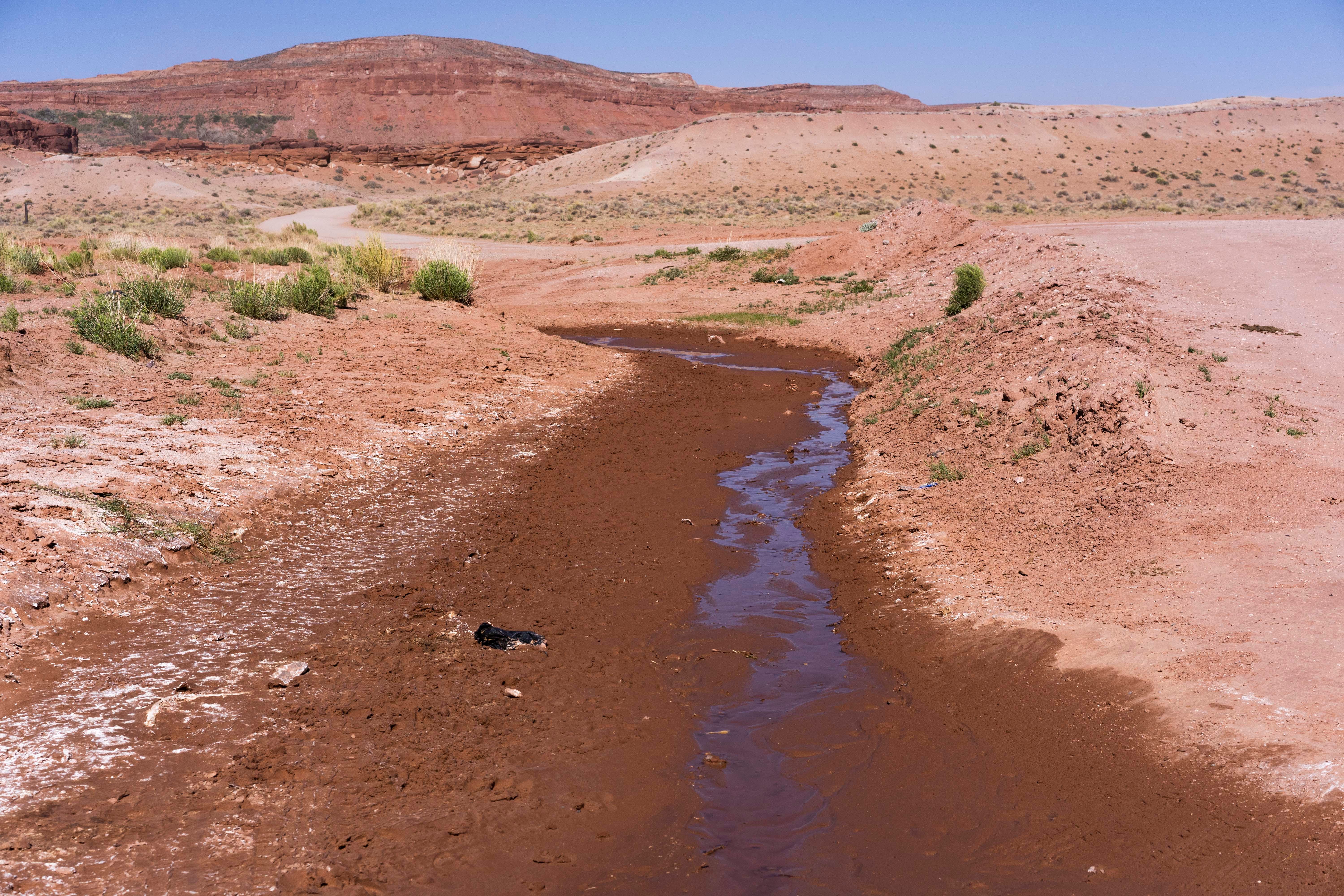
After years of pressing for water and electricity, Jackson said she stopped going to local chapter meetings “because I found it useless.”
“They said there was a moratorium that covered the park where we can't do certain things and the chapter couldn't do nothing for us,” Jackson said.
Jackson is 62 and has diabetes. She and her daughters run a jeep tour business.
She used to make the 15-mile drive to haul water. But because of the virus, she now stays home while a daughter hauls water.
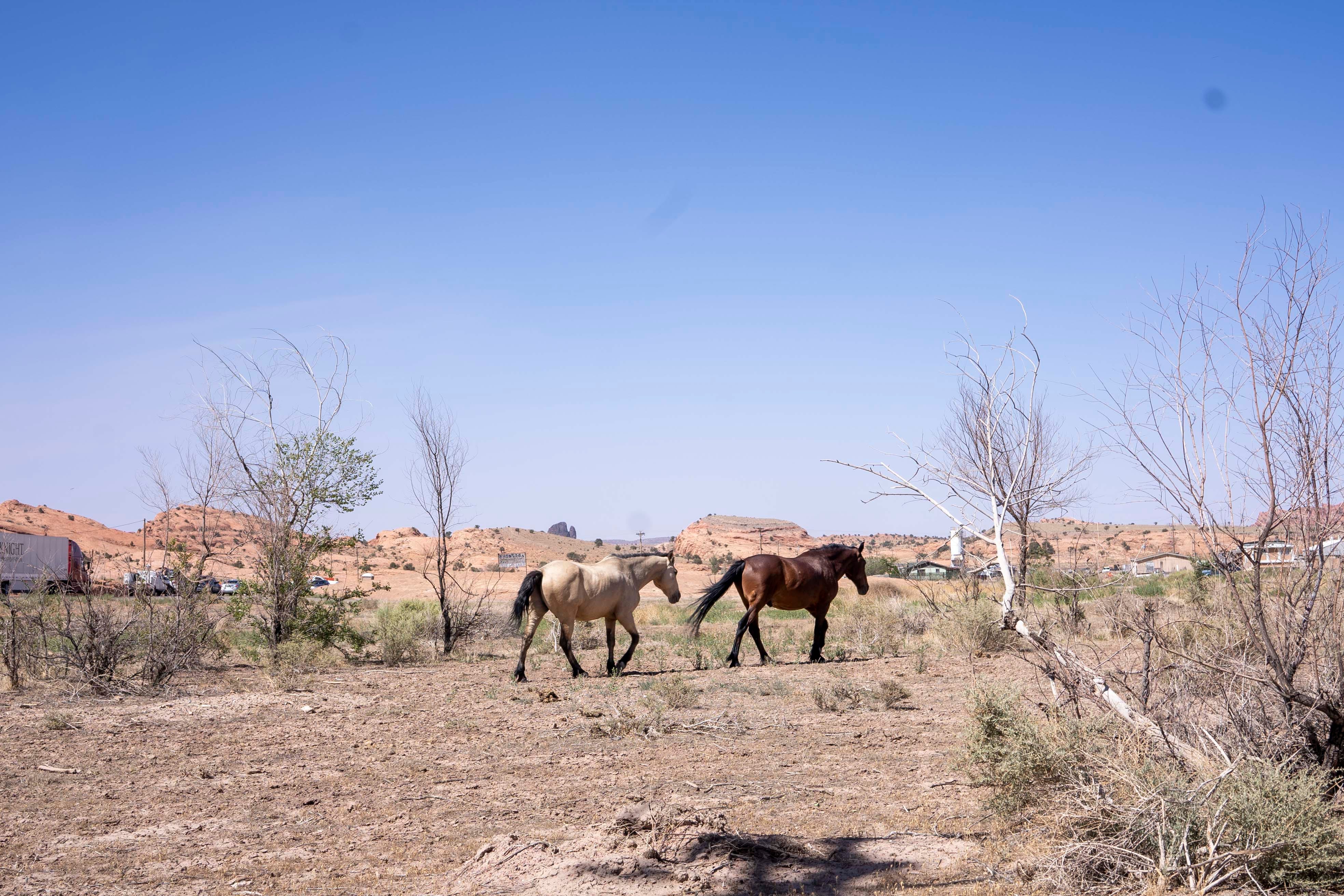
To avoid the crowd at the coin laundry, Jackson bought a used washing machine for her cabin. When her daughter brings water, Jackson fills up 7-gallon jugs and carries them inside.
Years ago, Jackson said, her family was able to get water from two other nearby sources, one of which filled a concrete tank. But those sources stopped working.
“I think they can rebuild those, a water well, put a water tank there,” Jackson said. “People could just run there and get water, or run pipes from that well to everybody's home.”
She said she hopes Navajo leaders will make it happen. If only she had running water, Jackson said, she would plant flowers and have “a nice green front yard.”
The Navajo Nation’s leading water officials say they are working on plans to build projects that will supply more homes and are discussing how best to use the coronavirus relief funds for top priorities.
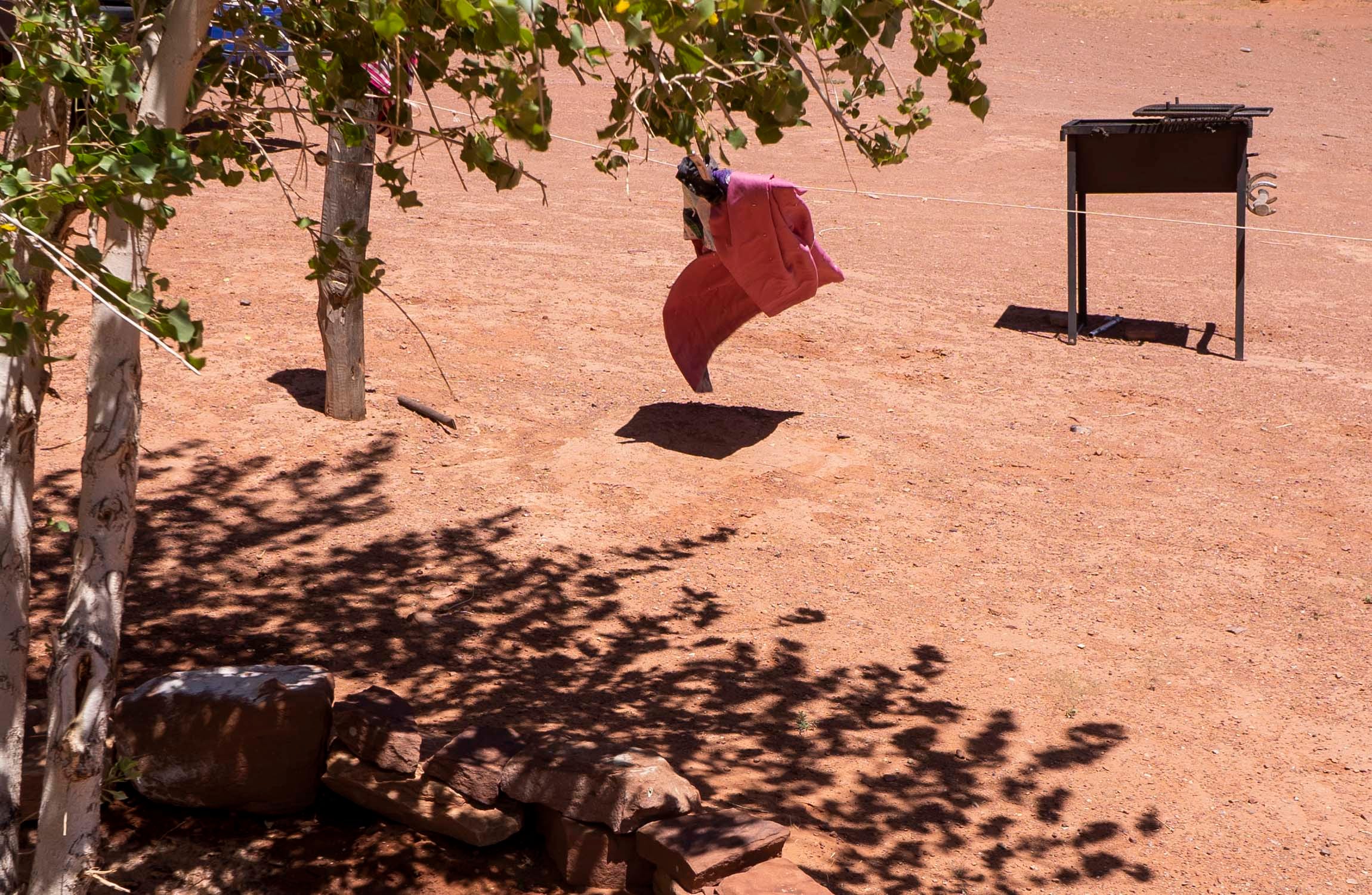
More funding could also be available under legislation passed in June by the Senate. After decades of negotiations, the Navajo Utah Water Rights Settlement Act would quantify the tribe’s rights in Utah. It would enable the Navajo Nation to use 81,500 acre-feet of water per year from the state’s Colorado River allocation and would create a $218 million fund for water infrastructure on the Utah portion of the reservation.
If the legislation is passed by the House and becomes law, the Navajo Nation’s leaders would decide how to spend the funds.
One priority will be to extend water pipes to homes in the Oljato area, said Jason John, director of the Navajo Department of Water Resources.
The tribe’s leaders will also consider building a 26-mile pipeline from the San Juan River to the Oljato area, a proposal that the Bureau of Reclamation detailed in a 2016 study.
Building the pipeline would take a few years, John said. “But if we can have enough groundwater, in the short term, we'd like to start extending those systems to homes as well, so that when the San Juan River water get there, they can help benefit a lot more people.”
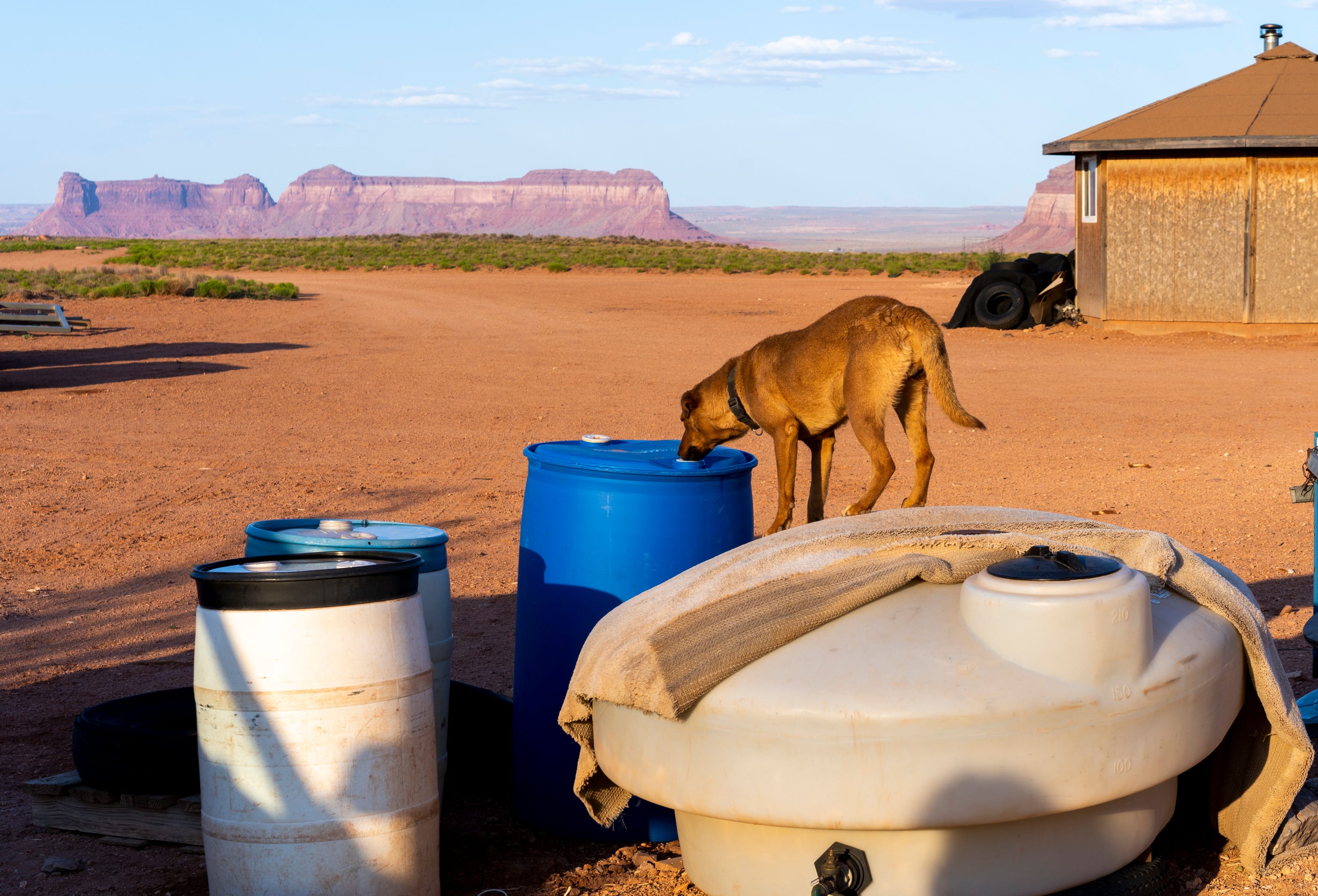
In the meantime, John said, his department is seeking funding to drill a well to augment the existing water supply in the Oljato area.
John said he and other officials often focus on pressing for funding through congressional appropriations, federal programs and water settlements.
“Every year, you try to advocate for more money,” John said. “But it's always gone unheard, year after year after year, and people just kind of got used to those situations where people didn't have access to water.”
The coronavirus relief funding will help, but needed projects can’t be built within a few months, John said. “The solution for Navajo is going to take several years to deal with, if you have enough money.”
His department has been updating the Navajo Nation’s water resource development strategy, a document last released as a draft in 2011. To plan water projects, John’s department coordinates with the federal Indian Health Service, which runs a program that builds water systems to supply homes.
“Every year, they tackle some projects,” John said, adding that the federal agency’s list of “unmet needs” in water projects now totals $520 million.
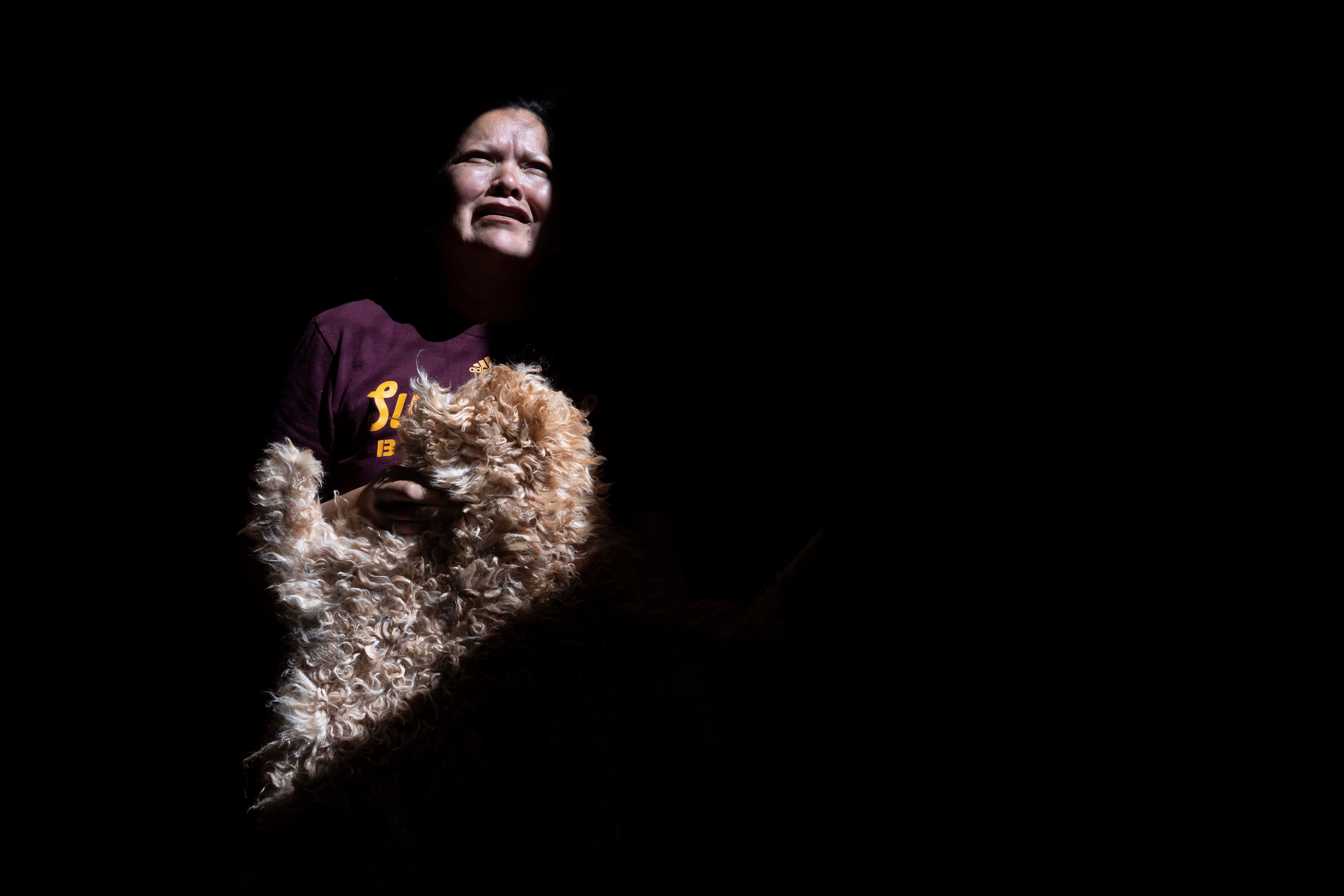
Last year, the agency had a budget of $27.4 million for this program in the Navajo area.
At the end of last year, the federal agency’s “sanitation deficiency system” list included approximately 3,500 homes that lack adequate water and sewer.
“These homes are not on funded project lists,” said Jenny Notah, a spokesperson for the Indian Health Service. “There are many homes that are on funded projects and are awaiting construction completion.”
It's just a matter of moving the water and then creating distribution systems to connect people. It is a plan that can be realized.
In the Oljato and Monument Valley areas, the agency plans to begin construction in the coming year on several projects, building water lines and installing cisterns.
The agency also received $10 million in CARES Act funding for drinking water and sanitation needs, Notah said, and is “collaborating with the Navajo Nation and the Centers for Disease Control and Prevention to identify and prioritize actions to increase access to water to reduce the spread of the coronavirus.”
The Indian Health Service is using $620,000 from those funds to install "emergency transitional water points" in dozens of Navajo chapters.
As Navajo leaders consider water projects, one of the experts advising them is Rex Kontz, deputy general manager of the Navajo Tribal Utility Authority. Kontz said water infrastructure is the "number 1 priority" and officials will be vetting proposals to decide which ones to fund.
Kontz showed a map of the reservation with blue lines snaking across it representing existing water systems and red lines marking proposed pipelines that would move water to new areas. He called it a conceptual “global water plan.”
Proposed water settlements would help make the projects possible. The Navajo Nation has yet to settle its unresolved water rights claims in Arizona. But once settlements are finalized, Kontz said, that would dramatically expand the amount of water and funding available.
“It's just a matter of moving the water and then creating distribution systems to connect people,” Kontz said. “It is a plan that can be realized.”
Kontz estimates that building all the projects in the plan would cost about $4.5 billion.
While these projects would dramatically expand water systems, they still wouldn’t reach many homes in remote areas. Building water lines to homes that are miles away from others would not only be expensive, Kontz said, but could run into logistical problems relating to water quality. If a house is so far-flung that the water sits in a pipe for too long, the water can become stagnant.
So, for homes that are too distant to be connected, Kontz said, other sorts of solutions will be needed.
In other rural areas of the Southwest, homeowners often pay to drill their own private wells. But on the Colorado Plateau, installing new wells in some areas may not be practical or affordable. In places, well-drilling rigs have bored down more than 1,000 feet and come up dry.
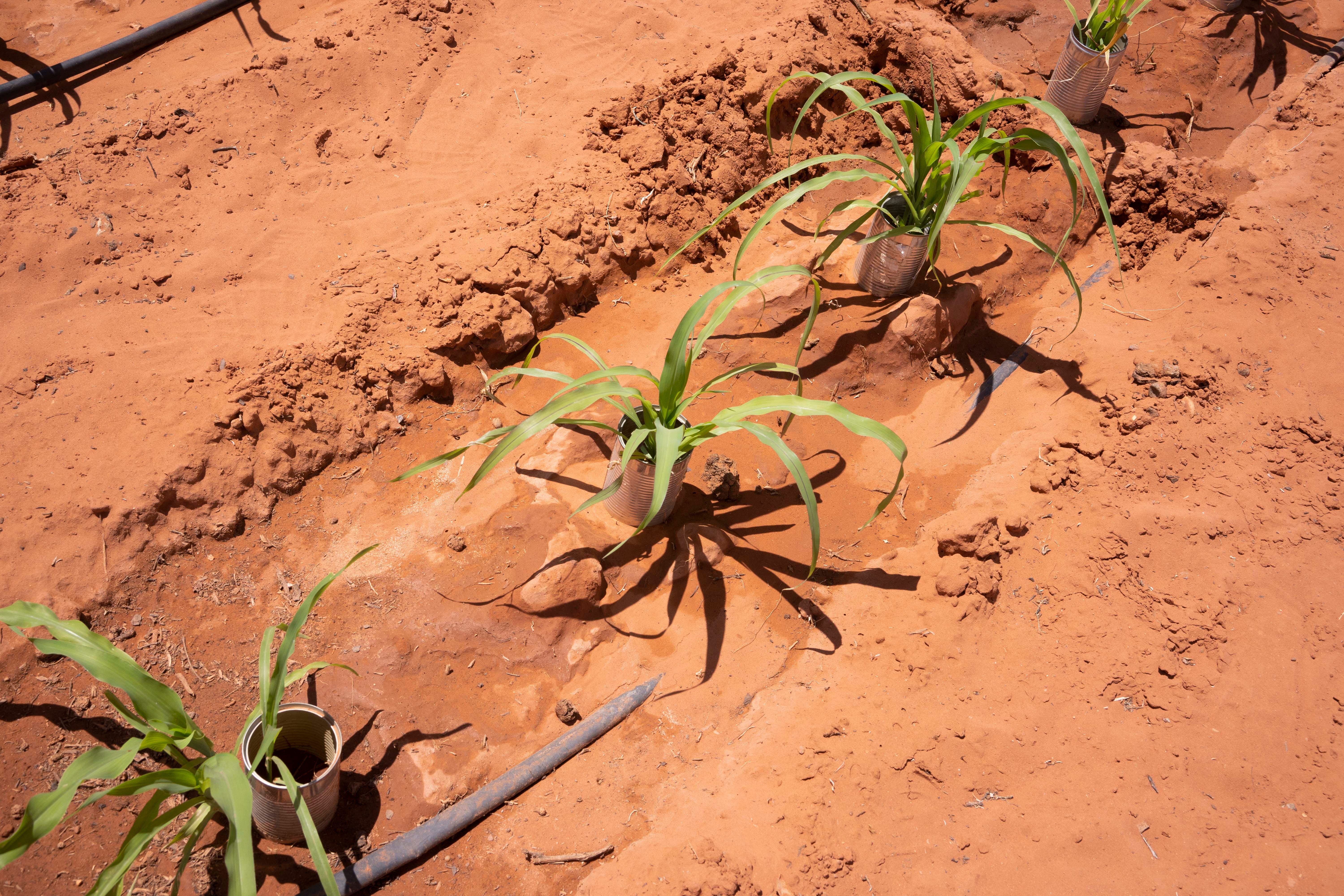
Some wells on the Navajo Nation are more than 2,000 feet deep, said Crystal Tulley-Cordova, principal hydrologist with the Department of Water Resources. “When you think about wells that deep, that's very expensive. And so, economically, doing small wells for everybody is not the answer.”
Instead, building up the public water systems helps improve access in many areas and could eventually lead to interlinking these networks, perhaps forming “a big circle” around the Navajo Nation, she said. And where homes are spread too sparsely to link up, she said, solutions include “off-grid” systems with cisterns and septic tanks.
“Off-grid” systems are the specialty of the nonprofit group DigDeep and its Navajo Water Project.
DigDeep helps residents by installing an underground 1,200-gallon tank, a propane water heater and solar panels to power a water pump. The group starts by identifying a safe, accessible water point, which may include rehabilitating a well, and works with partners that drive water trucks to fill the home water systems.
“We have served almost 300 families with running water,” said Emma Robbins, director of the Navajo Water Project. “We are working with a lot of families who don't have the option to hook into infrastructure either because they're too far from the line or there's a wait because there's a list of other candidates.”
The group has installed home water systems in northwestern New Mexico, Dilkon, Arizona, and Navajo Mountain, on the Utah-Arizona border. Each area has its own unique circumstances, Robbins said, and there is no “copy-and-paste solution” for different parts of the Navajo Nation.
How long might it take to address the widespread problems of Navajo people living without access to water? Robbins said she thinks it will take longer than a decade — “more like two decades” — and will require things like paving more roads to install water lines. She suggested first collecting more data about areas without water to get a better handle on the problems.
She said it will be important for different agencies and nonprofits to keep coordinating efforts, and to ensure that once water systems are built, they’re maintained to keep them going.
Robbins, who is 33 and grew up in Tuba City, said she feels angry about how the situation has persisted for so long. She’s noticed other Navajos, especially young people, are increasingly voicing their anger, speaking about “environmental racism” and saying it’s time to make changes.
Robbins said when she talks with older people, they don’t express as much anger about the situation, and that may be because of the cultural importance given to “walking in beauty,” a central idea in the Navajo “hózhó” philosophy, which involves striving for harmony and balance, thinking positively and speaking positively.
“I was raised very traditionally and I do consider myself a traditional Navajo. But I'm like, I don't want to do that anymore. I want to feel angry,” Robbins said. “And I want to not only feel angry but say, ‘Hey, there are so many people who feel the same way.’ And we can all band together and do something.”
Reach reporter Ian James at ian.james@arizonarepublic.com or 602-444-8246. Follow him on Twitter: @ByIanJames
Support local journalism: Subscribe to azcentral.com
Environmental coverage on azcentral.com and in The Arizona Republic is supported by a grant from the Nina Mason Pulliam Charitable Trust. Follow The Republic environmental reporting team at environment.azcentral.com and @azcenvironment on Facebook, Twitter and Instagram.
